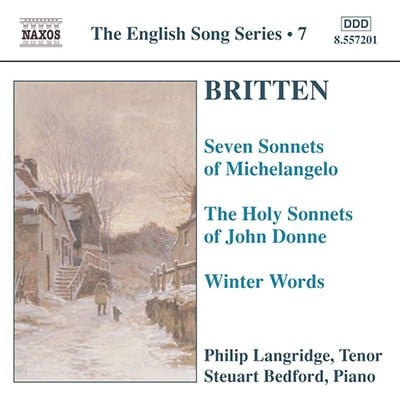Michaelangelo Buonarroti (I)
Abbreviations (PDF)
Boosey & Hawkes
Seven Sonnets of Michelangelo was completed in October 1940 during Pears and Britten’s three-year stay in America, though the first performance was not given until September 1942 at the Wigmore Hall in London. In 1939 Britten had set the French symbolist poetry of Arthur Rimbaud in his Les Illuminations for high voice and strings, one of his most mature and fully achieved works to that date. It was the success of this that must have encouraged him to meet the challenge of setting texts in languages other than English. In the Michelangelo Sonnets it could be said that he came of age as a song composer. It was the first work that Britten composed exclusively for Pears and it is significant that all seven poems deal with various aspects of love. The settings are widely contrasted around this general theme: the first is dominated by an obsessive figure in the piano which throws the tenor’s broad melodic line into relief; the third song is based on one of those Britten ideas that appears so simple as to court banality, but instead succeeds in conveying a fundamental essence. As in the later Donne and Hardy cycles, Britten contrives to make the final song a cumulative statement, retrospectively summing up all that has gone before using relatively simple musical means: in the concluding Sonnet XXIV, the piano’s ascending bass solemnly introduces the descending sequences of the tenor’s unaccompanied Spirto ben nato. Voice and piano are united before the end, but it is the piano that has the last word, rounding off the cycle in a serene glow of
D major.
Reproduced by kind permission of the Britten-Pears Library

Philip Langridge/Steuart Bedford
Naxos 8.557201

